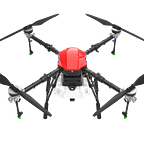How is drone technology transforming agriculture?
Drone technology is revolutionizing the agricultural sector, introducing unprecedented levels of efficiency, precision, and sustainability. As the world faces the dual challenges of feeding a growing population and addressing climate change, drones are becoming indispensable tools for modern farmers. Here’s a look at how drone technology is transforming agriculture.
1. **Precision Farming**
One of the most significant impacts of drones in agriculture is the advancement of precision farming. Drones equipped with multispectral, thermal, and visual sensors allow farmers to monitor crop health in real-time. These sensors can detect subtle changes in the color and temperature of plants, which may indicate stress, disease, or water deficiency. By providing precise data on crop conditions, drones enable farmers to apply water, fertilizers, and pesticides more efficiently, reducing waste and enhancing crop yields.
2. **Efficient Crop Spraying**
Drones have revolutionized the application of fertilizers, pesticides, and herbicides. Traditional crop spraying methods, such as using tractors or manual labor, are time-consuming and often imprecise. Drones can cover large areas quickly and apply chemicals with pinpoint accuracy, minimizing exposure to non-target areas and reducing the amount of chemicals needed. This not only lowers costs but also decreases the environmental impact of farming practices.
3. **Field Mapping and Surveying**
Drones are also changing how farmers survey and map their fields. High-resolution aerial images captured by drones provide detailed maps that can be used for planning and monitoring. These maps allow farmers to identify variations in soil type, moisture levels, and crop growth. With this information, they can make informed decisions about planting, irrigation, and harvesting, leading to more productive and sustainable farming practices.
4. **Livestock Monitoring**
In addition to crop management, drones are proving valuable in livestock farming. They can monitor the health and location of animals over vast areas, reducing the need for time-consuming manual checks. Drones can be equipped with thermal cameras to detect heat signatures, allowing farmers to identify sick or injured animals quickly. This technology is particularly useful in large, remote pastures where traditional monitoring methods are challenging.
5. **Disaster Management and Crop Insurance**
Drones play a critical role in disaster management and crop insurance. After events like floods, droughts, or storms, drones can quickly assess damage to crops and infrastructure, providing vital data for insurance claims and recovery efforts. This rapid response capability helps farmers recover more quickly and efficiently from natural disasters, reducing economic losses and ensuring food security.
6. **Increased Accessibility and Affordability**
As drone technology advances, it is becoming more accessible and affordable for small and medium-sized farms. The cost of drones has decreased significantly in recent years, and user-friendly interfaces have made them easier to operate. This democratization of technology means that even small-scale farmers can benefit from the advantages of drones, leveling the playing field in the agricultural industry.
7. **Sustainability and Environmental Benefits**
Drone technology contributes to more sustainable farming practices by enabling precise application of inputs and reducing the overall environmental footprint of agriculture. By minimizing the use of water, fertilizers, and pesticides, drones help conserve natural resources and protect ecosystems. Additionally, the data collected by drones can inform more sustainable land management practices, such as crop rotation and soil conservation, which are essential for long-term agricultural productivity.
8. **Data-Driven Decision Making**
Drones are part of a broader trend towards data-driven decision-making in agriculture. The data collected by drones can be integrated with other technologies, such as satellite imagery, weather forecasts, and soil sensors, to provide a comprehensive picture of farm operations. This integration allows farmers to make more informed decisions, optimize their resources, and improve overall farm management.
9. **Future Prospects**
The future of drone technology in agriculture looks promising, with ongoing advancements in artificial intelligence (AI), machine learning, and automation. Drones are expected to become even more autonomous, capable of performing tasks such as planting seeds, monitoring crop growth, and harvesting crops with minimal human intervention. As these technologies continue to evolve, drones will play an increasingly central role in the future of farming.
10. **Challenges and Considerations**
While drone technology offers numerous benefits, there are also challenges to consider. Regulatory frameworks for drone use vary by country and region, and farmers must navigate these regulations to ensure compliance. Additionally, the initial investment in drone technology can be significant, although the long-term benefits often outweigh the costs. Finally, farmers need to acquire the skills and knowledge to operate drones effectively, which may require training and education.
Conclusion
Drone technology is transforming agriculture by enhancing precision, efficiency, and sustainability. From crop monitoring and spraying to livestock management and disaster response, drones offer a wide range of applications that are revolutionizing the way farmers manage their operations. As technology continues to advance, drones are set to play an even more significant role in shaping the future of agriculture, helping to meet the global challenges of food security and environmental sustainability.
Originally Published by SAMLI DRONES
